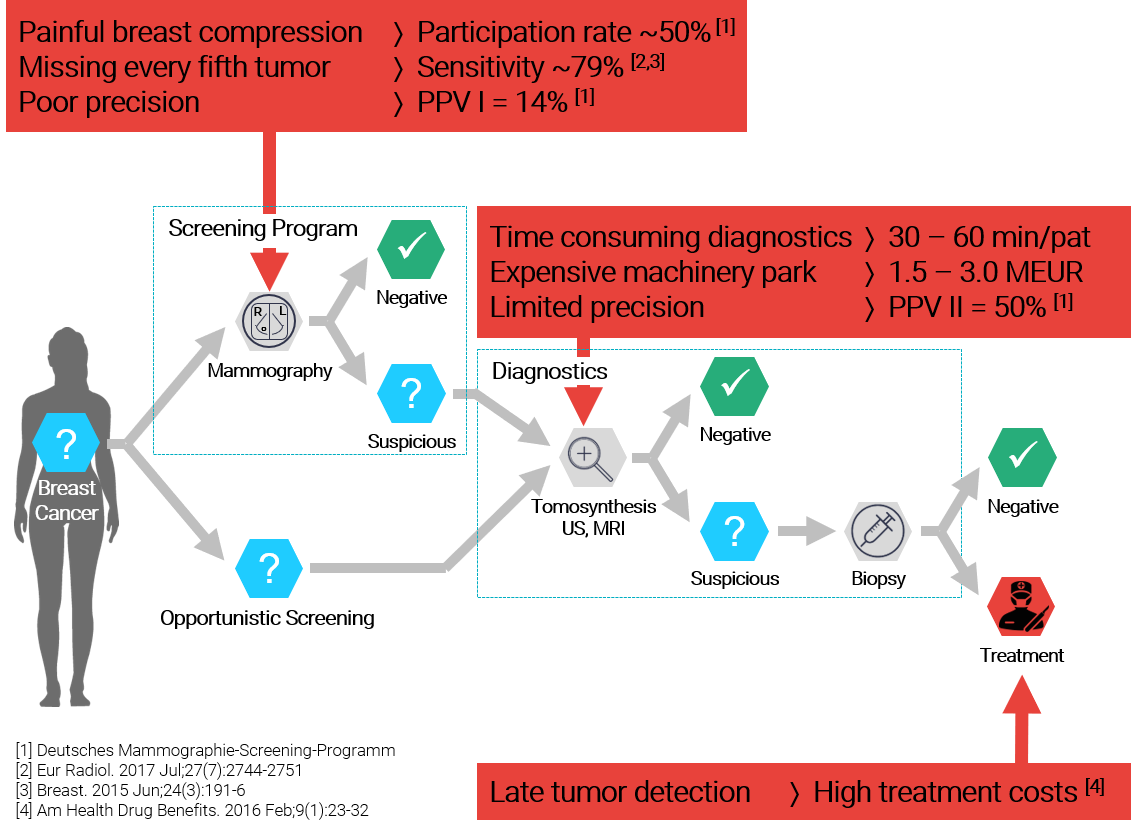Epidemiology
Breast cancer is the second most common cancer in the world and, by far, the most frequent cancer among women. The World Health Organization (WHO) estimated that 2.2 million new cancer cases have been diagnosed in 2020, causing the death of 685,000 women [Globocan 2020], or in other words, 1 in 9 women develops breast cancer, where 1 in 4 dies from this disease. Current forecasts and statistics indicate a significant rise of both, incidence of breast cancer and related mortality, predicting that worldwide incidence will reach approximately 3.2 million new cases by 2050 [Cell Biochem. Biophys., 72(2):333–8, 2015], with the increase in costs that this entails. These figures reflect the magnitude of the problem, its repercussions on society and the need for urgent measures to reduce its effects clearly and categorically.

State-of-the-art Breast Cancer Diagnosis
To reduce mortality rate, cut hospital costs and lower social burden, an early and accurate detection is essential, since a growth of 1 mm in the tumor diameter is associated with a one percent increase in the chance of death. For this reason, screening programs have been established in many countries. However, breast cancer screening is controversially discussed in many regions, since mammography, the only method currently approved for breast cancer screening, has severe limitations. Therefore, breast radiologists worldwide call for new methods with significantly enhanced tissue sensitivity and specificity under dose control.
If a screening result was found to be suspicious or if a woman decides to undergo an opportunistic breast cancer diagnosis, they will all end up in a diagnostic setting, which is schematically sketched in the figure below. In this setting, several imaging modalities are combined to get to an image based diagnostic result. In most cases, tomosynthesis or mammography are combined with ultrasound (US) and in fewer cases, even magnetic resonance imaging (MRI) is added. The combination of these methods is time-consuming, requires a lot of experience from the operator and an expensive machinery park. If the image-based diagnostic result is found to be suspicious, a tissue biopsy is taken to confirm the result. However, in Germany for instance, it was reported, that only in about fifty percent of all these cases, the women actually had a tumor [German Mammography Screening]. This shows the overall limitation of the state-of-the-art imaging approach and the need for improved methods.


